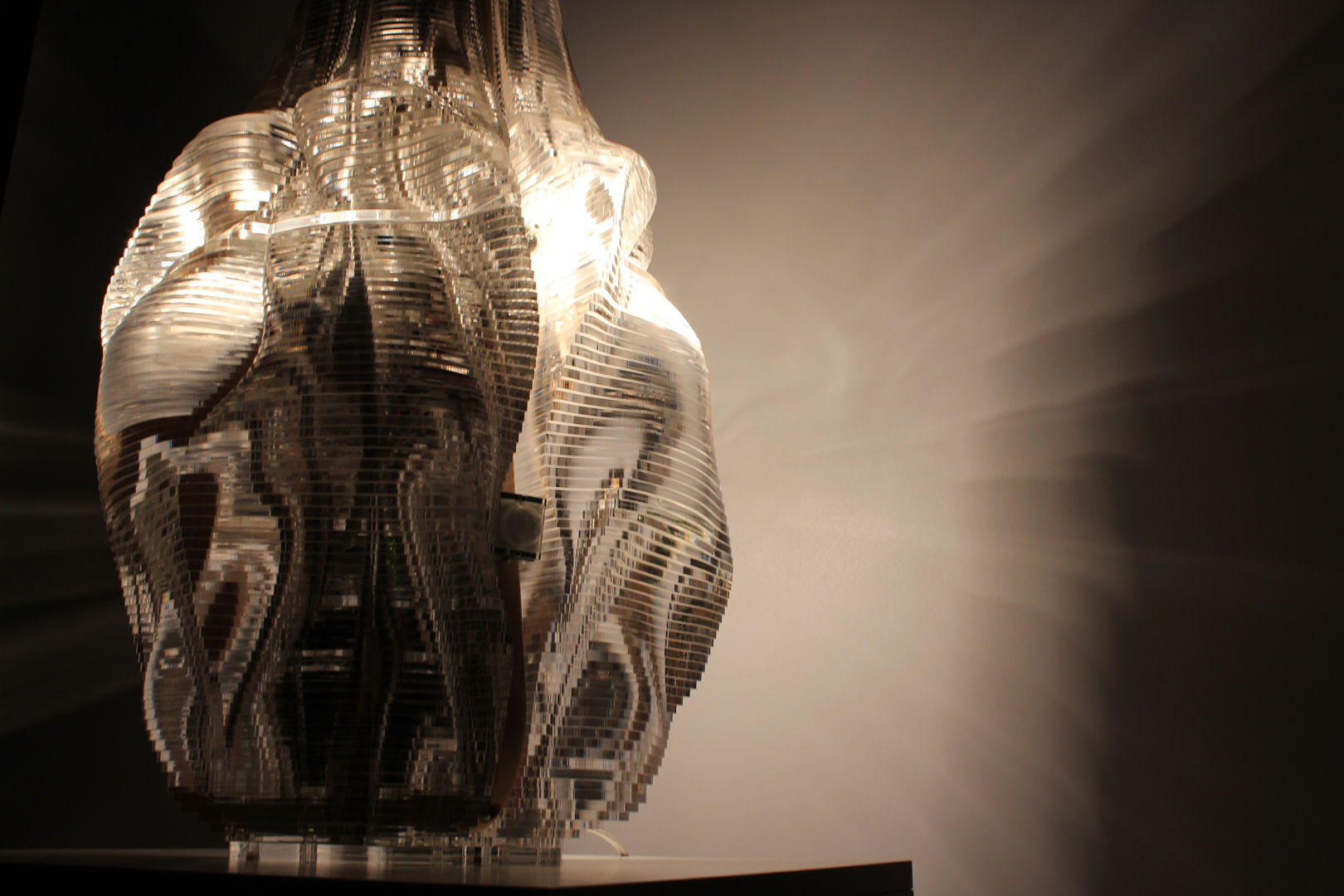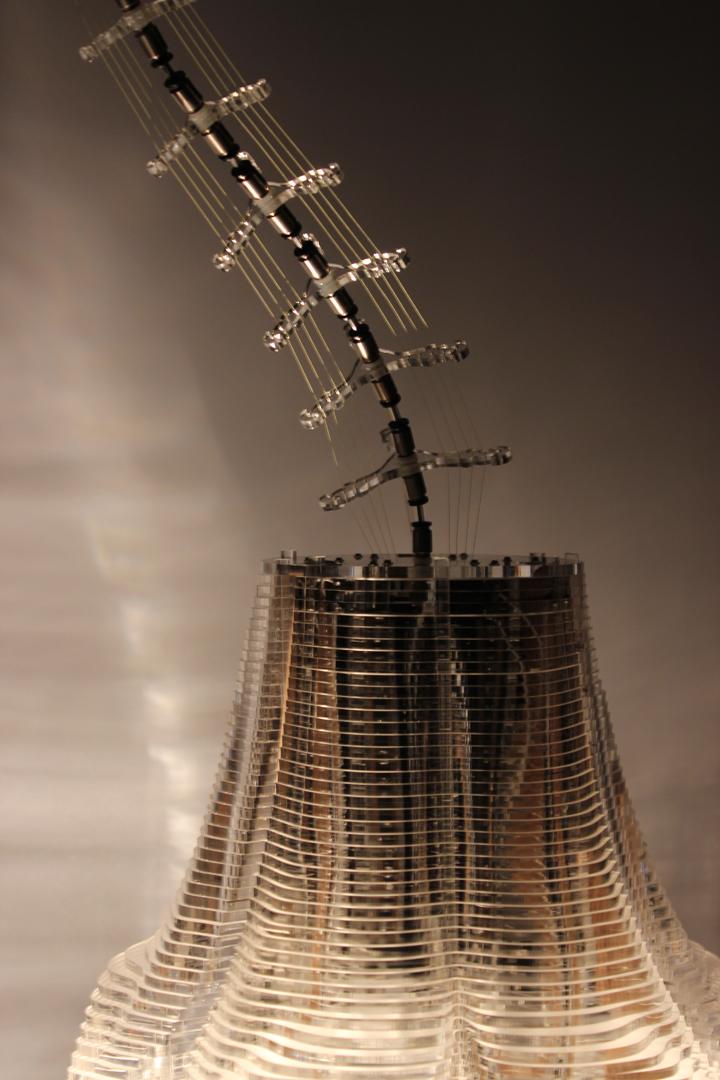Scottie Chih-Chieh Huang: Transparent Organ
Artist(s):
Title:
- Transparent Organ
Exhibition:
Creation Year:
- 2014
Category:
Artist Statement:
Biologically inspired computing and bionic design point to new directions in the creation of objects. Growth in most natural forms is dictated by the basic rules of symmetry and recursion, relying on the process of Self-organization and synergy as the primary mechanisms for producing “behaviours” of adaptation. Therefore, this project aims to demonstrate a novel approach to fabricating artificial nature, through algorithm studies that simulate the development of both form and behaviours found in the natural world.
Transparent Organ is based on trilateral rotational symmetry and reflection to generate organic forms through digital fabrication techniques. It uses the metaphor of phototropism in building algorithms for interaction with a whisker-like sculpture. The motions of the views trigger light sources, instantaneously guiding the directions of the sculpture as it bends to face to the light. The installation explores the between the ambient atmosphere and the kinetic interaction in a space.
The technical aspects of the work include the use of actuators to control the wire’s tension and compression for effecting the transformation of a flexible structure, and the organic shape is generated and fabricated by CAD/CAM. In terms of behaviours, the interactive algorithms is built as a cellular computing object, it may detect outside contact, and changes the self-state of lighting and actuating control. Furthermore, it may be applied as a cellular automata system to reorganise itself in keeping with similar objects, forming global behaviours.
該創作模仿有機物的生成原理,發展仿生物件創造的可能性。最為自然的生長模式是由對稱與遞迴的規則操縱,依靠自我組織形成的綜效產生各種適應的行為。此計劃根據演算法對於仿生形貌與行為的研究,以不同的途徑呈現一種人造自然的系統與觀賞情境。
Transparent Organ(光器)基於三向軸對稱 (trilateral rotational symmetry) 與透明材質反射原理的特性,發展數位構築下的有機形體。其內部的行為機制由演算法具有光趨性的暗喻,與觀者產生互,進而啟動光源、改變植物彎曲,以此尋找環境空間中光與可動物件的互動關係。
技術上,這件作品使用致動器控制動態結構中的拉力物件的鬆緊程度,改變動態雕塑體的外觀變化。內部行為機制則是由模組化的行為機制,以自我調適外部參數的控制下,探索自主調試性與衍生性的行為。
Sponsors:
National Taiwan Craft Research and Development Institute
台灣工藝研究發展中心
All Works by the Artist(s) in This Archive:
- Scottie Chih-Chieh Huang
-
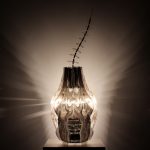
Transparent Organ
[SIGGRAPH Asia 2014] -
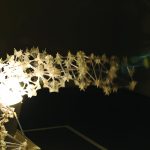
MSOrgm (Motivational Sensitive Organism)
[SIGGRAPH 2009] -
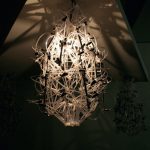
LBSkeleton (Listening Bio-Skeletion)
[SIGGRAPH Asia 2012] -
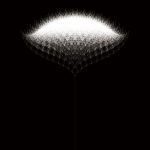
the Ghost in the Dandelion
[SIGGRAPH Asia 2017] -

LBSkeleton (Listening Bio-Skeleton)
[DAC Online Exhibition 2011] -
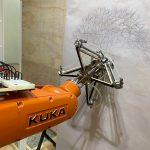
Dreaming With Dandelion
[SIGGRAPH Asia 2020] -
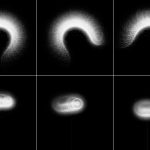
Sensitive Floral
[SIGGRAPH Asia 2023]


